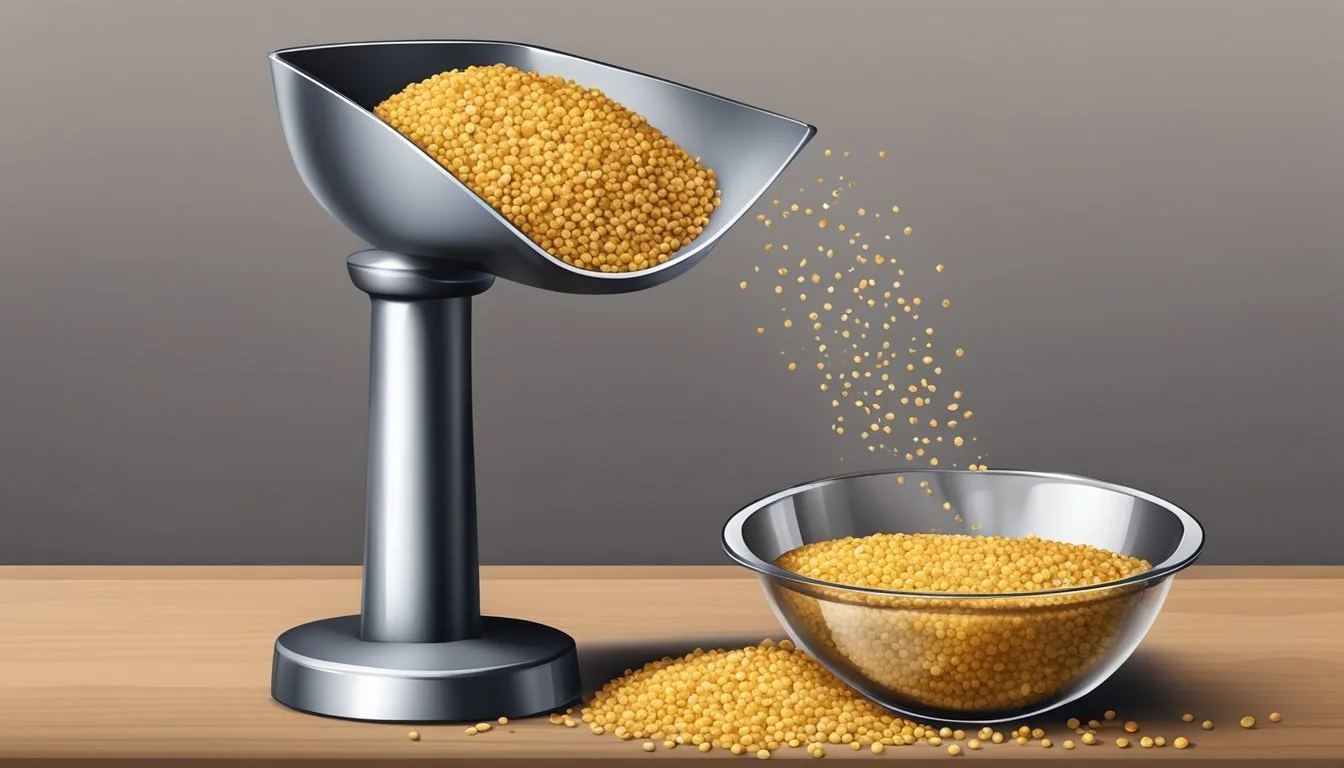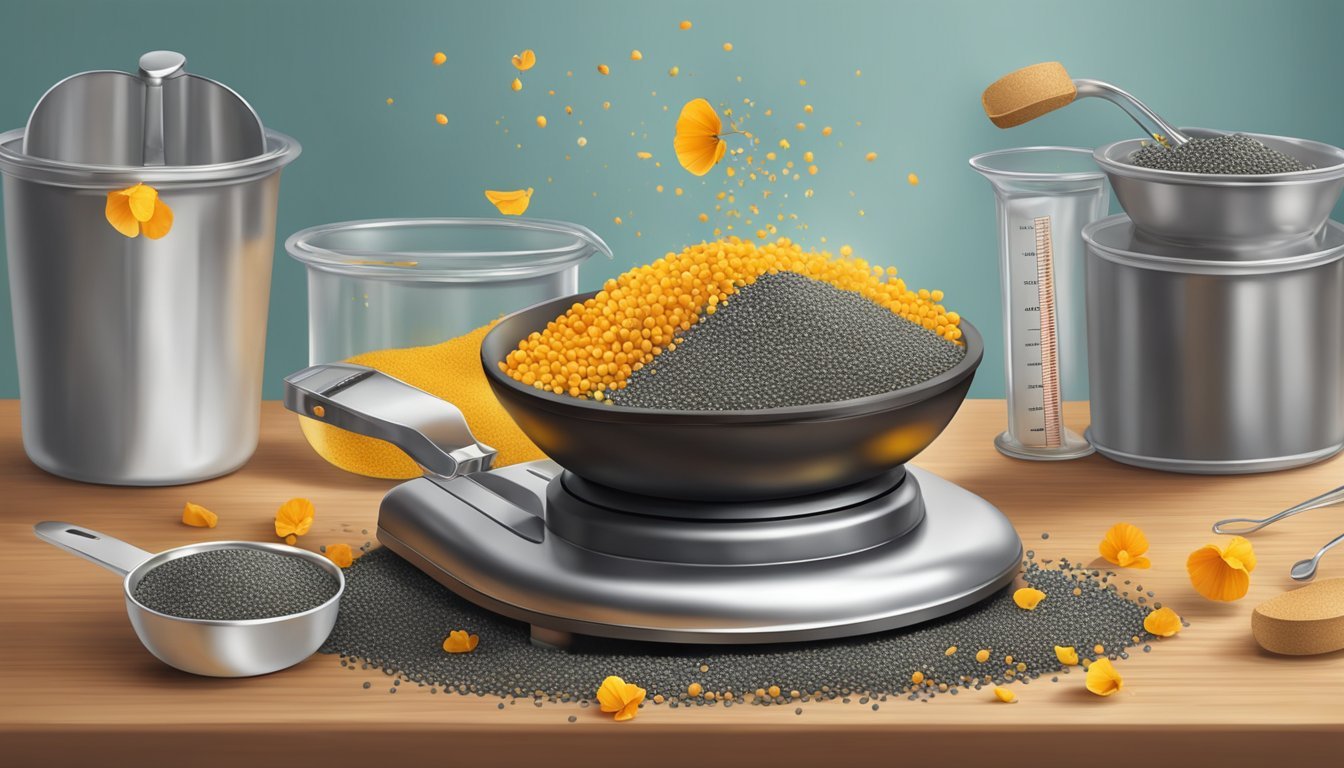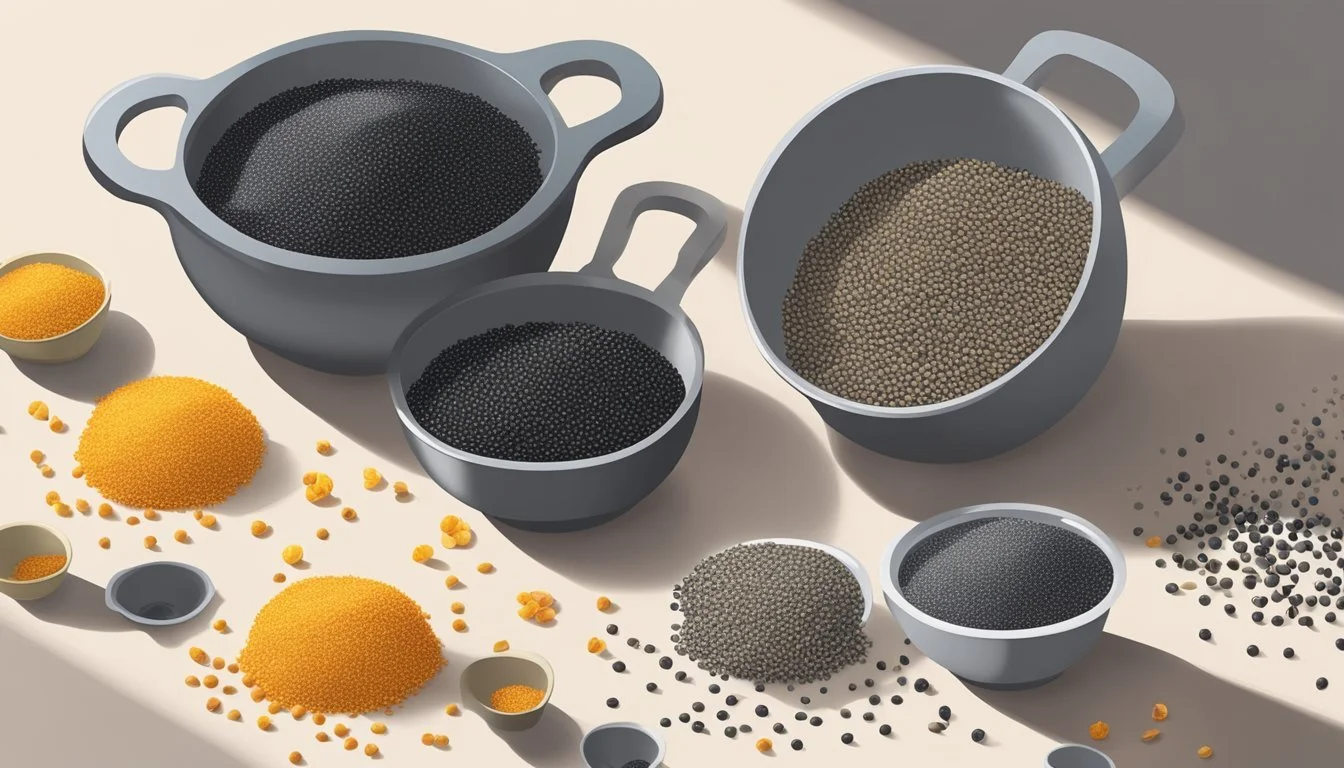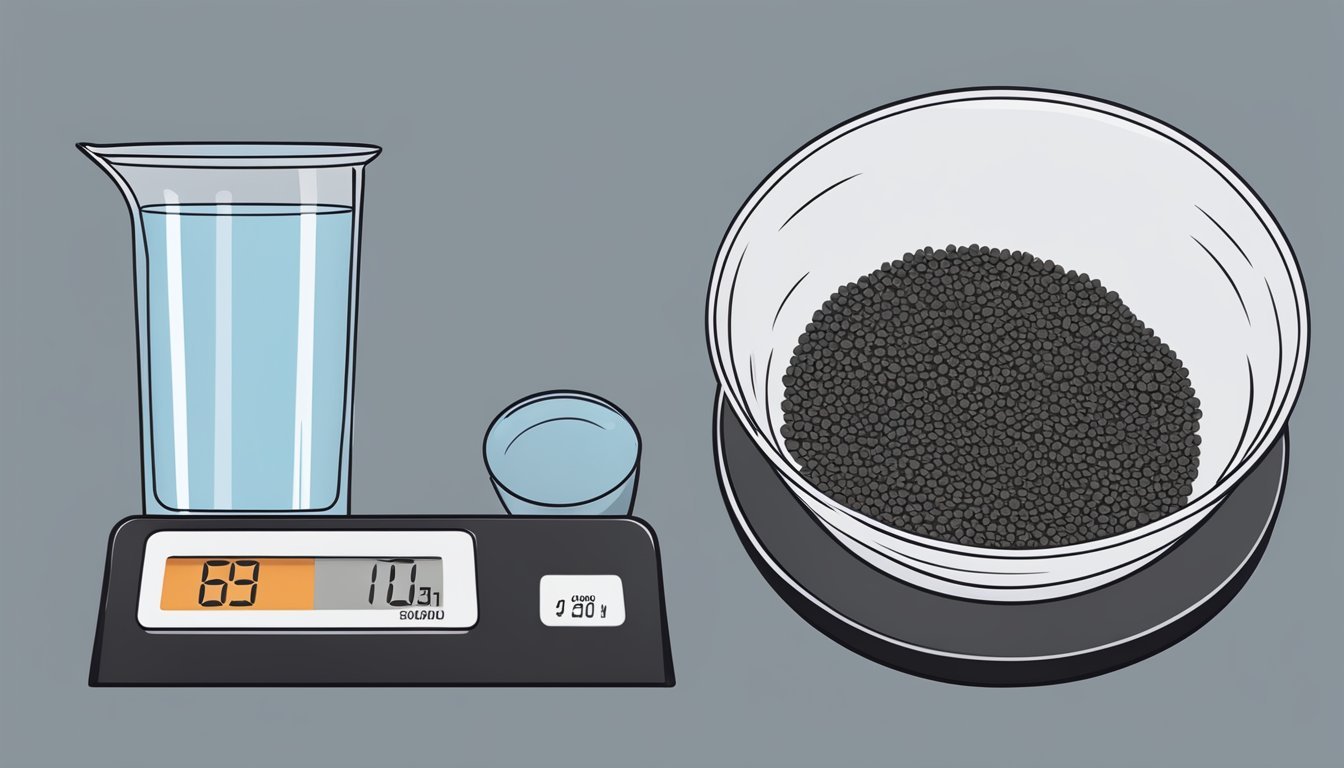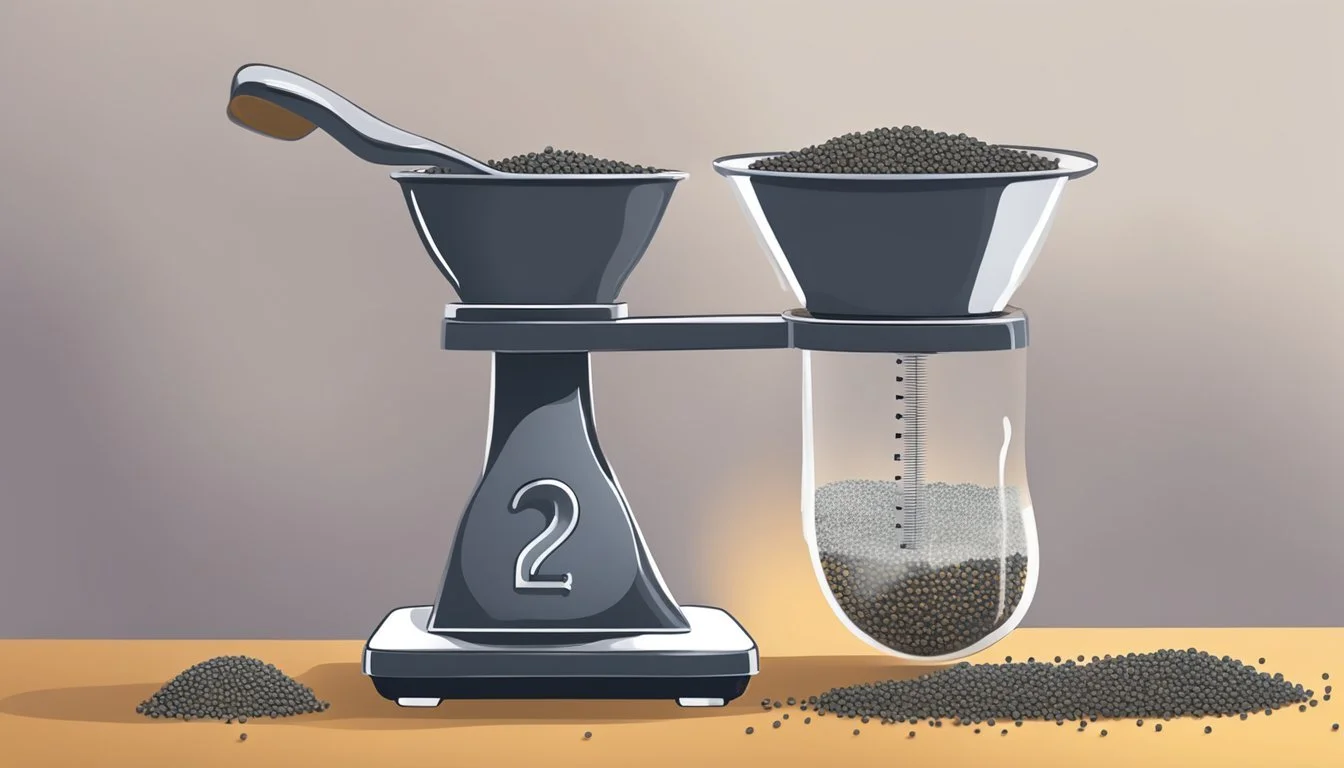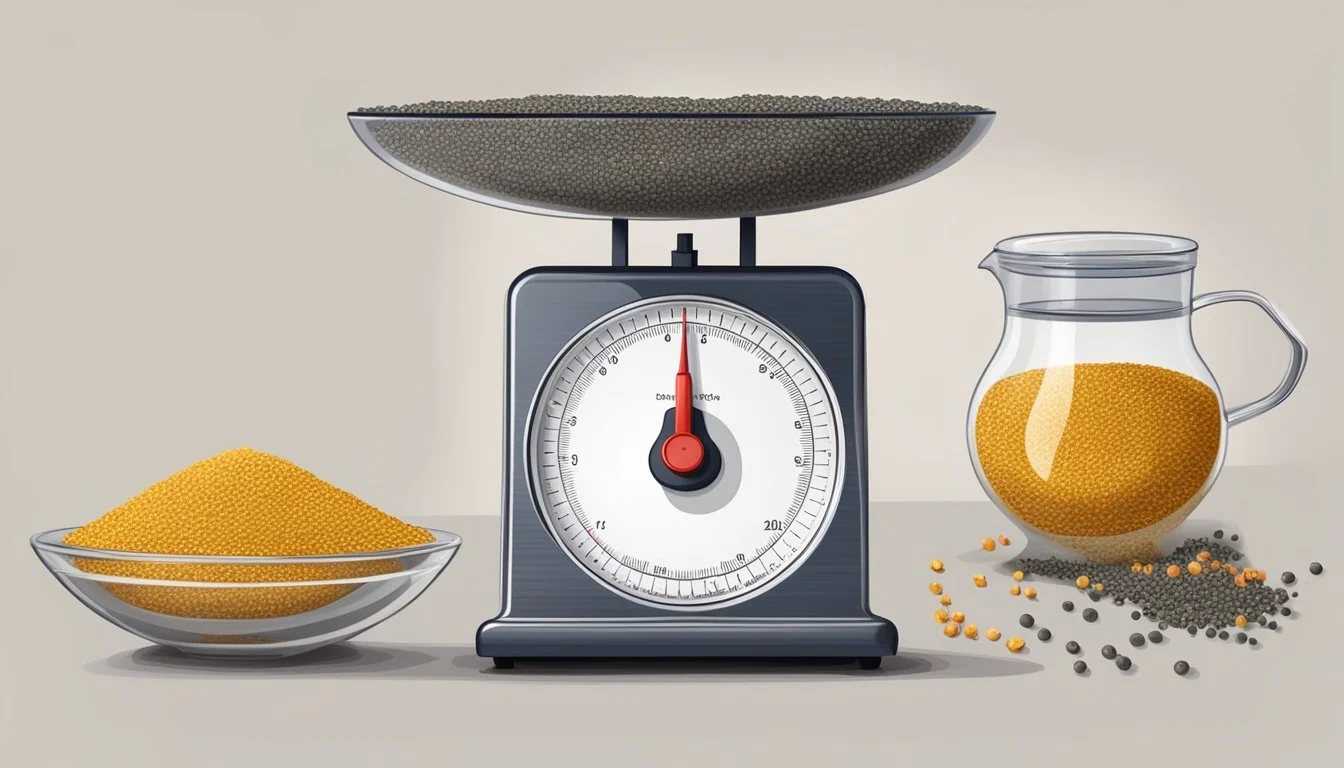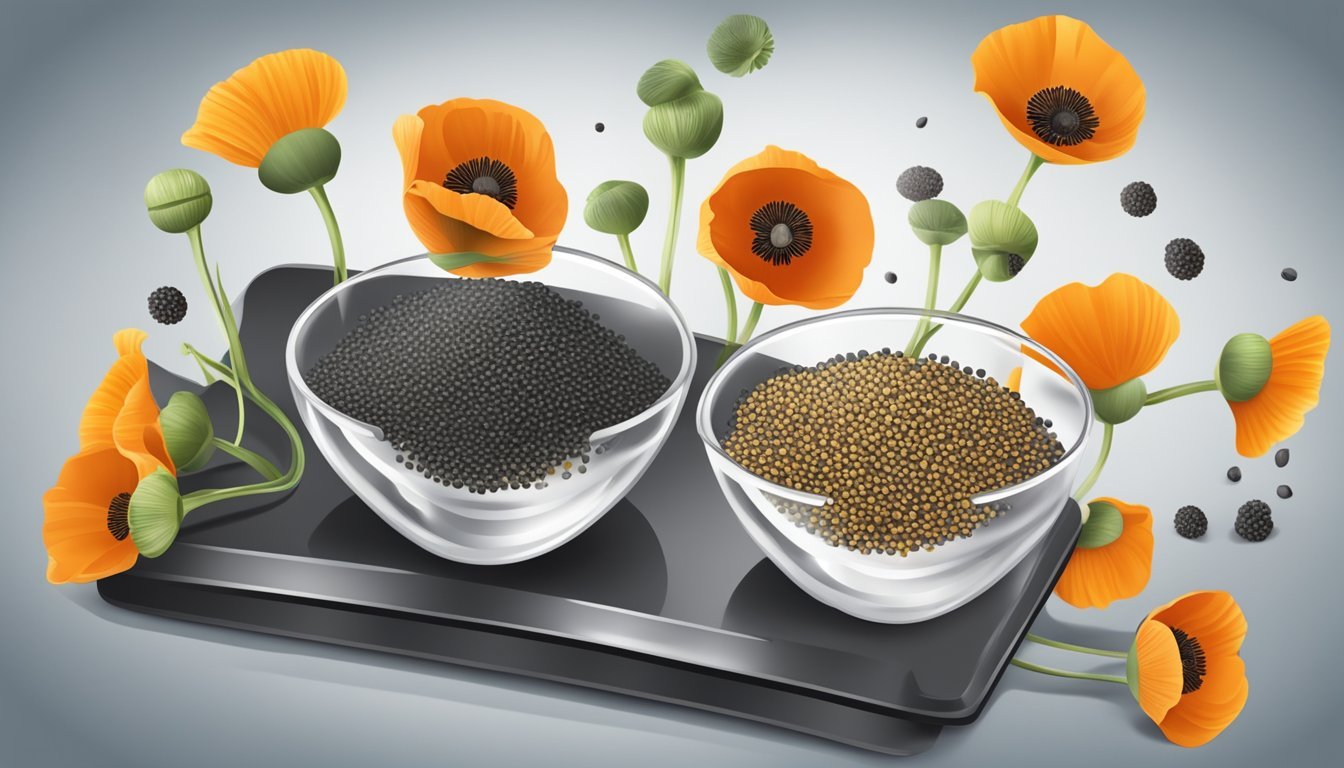How Many Cups in a Pound of Poppy Seeds
Measurement Conversion Guide
Determining the exact conversion of poppy seeds from pounds to cups is an essential step in cooking and baking. As poppy seeds are a common ingredient in various recipes, understanding their volume-to-weight relationship helps to ensure accuracy in ingredient measurement. Typically, one pound of poppy seeds is equivalent to approximately 3.2 to 3.5 cups. This conversion is crucial for cooks and bakers who require precision for their culinary creations, as a slight deviation in the amount can affect the texture and flavor of the final product.
When measuring poppy seeds, it is important to consider that the specific volume may vary slightly due to factors such as settling and the fineness of the grind. Although volume and weight are different units of measurement, with volume being a measure of space and weight being a measure of heaviness, both are used in the culinary world. Accurate conversions between cups and pounds are especially important when scaling recipes or converting between metric and imperial measurements.
Understanding Poppy Seeds
Poppy seeds, derived from the opium poppy (Papaver somniferum), are small, oil-rich, and have a nutty flavor. A staple in various culinary practices, they're not just decorative—they pack a nutritious punch.
Nutritional Profile of Poppy Seeds:
Protein: Essential for muscle repair and growth
Dietary Fiber: Aids in digestion and promotes a feeling of fullness
Iron: Vital for oxygen transport in the bloodstream
Manganese: Supports bone health and enzyme functions
Rich in protein and dietary fiber, poppy seeds contribute to a balanced diet. They also contain nutrients that are critical for various bodily functions. Iron, for example, is a key element in the formation of red blood cells, while manganese plays a role in bone formation and nutrient absorption.
Culinary Uses:
In the kitchen, poppy seeds are versatile. They add texture, a characteristic appearance, and a nutty essence to dishes. They are commonly sprinkled over breads, bagels, and are a prime ingredient in poppy seed fillings for pastries.
Here is a brief table for common measurements:
Quantity (Poppy Seeds) Cups 1/4 pound (4 ounces) ~7/8 cup 1/2 pound (8 ounces) ~1 3/4 cups 1 pound (16 ounces) ~3 1/2 cups
Units of Measurement
In the realm of cooking, understanding the relationship between different units of measurement is essential for precision and successful results. This is particularly true when converting weight to volume, such as pounds to cups, in the case of poppy seeds.
Volume vs. Weight
Volume measures the space that an ingredient occupies, whereas weight refers to the mass of that ingredient. When measuring poppy seeds, volume is often given in cups, tablespoons, or teaspoons, while weight is usually given in pounds, ounces, or grams. It's important to note that a cup of poppy seeds will weigh differently than a cup of other ingredients due to the seeds' density and the space they fill.
The Metric System
The metric system is widely used worldwide and is based on units like grams for weight and liters for volume. It provides a more straightforward conversion path due to its decimal-based structure. For reference, a pound of poppy seeds is equal to approximately 453.592 grams. In terms of volume, metric units such as milliliters are often used, with 1 milliliter corresponding to 1 cubic centimeter.
US Customary Units
US customary units, on the other hand, are used primarily in the United States. Weight is commonly measured in pounds and ounces, with one pound being equivalent to 16 ounces. Volume in the US is typically measured in cups, fluid ounces, quarts, pints, and gallons, with conversions being less intuitive due to their non-decimal base. One pound of poppy seeds translates to approximately 3.2 US cups. Here’s a basic conversion table for poppy seeds:
Weight Volume 1 lb 3.2 cups 8 oz 1.6 cups 4 oz 0.8 cups 1 oz 0.2 cups
It’s useful to have at hand these conversions as recipes may vary in the units they employ.
Conversions in Cooking
In cooking, precise measurements are crucial to achieve the desired outcomes, particularly in baking where the ratio of ingredients like flour and sugar can affect the final product significantly. Various tools such as measuring cups and kitchen scales facilitate these conversions from volume to weight and vice versa.
Cup to Pound Conversion
For most dry ingredients, the conversion from cups to pounds is not a straightforward 1:1 ratio due to the varying density and size of the ingredients. For example, poppy seeds usually have the following conversion ratio:
1 pound of poppy seeds = approximately 3.5 US cups
Chart for common ingredients:
Ingredient Cups in 1 Pound Sugar About 2.25 cups Flour About 3.62 cups Poppy Seeds About 3.5 cups
It's important to consult a relevant conversion chart for each specific ingredient.
Volume to Weight Conversion
Converting from volume to weight can be complex as it depends on the density of the ingredient being used. A volume to weight converter often utilizes a database of ingredient densities to give accurate conversions. For instance, 1 cup of an ingredient might not weigh the same as 1 cup of another due to this difference in density. Cooks typically use a kitchen scale for such conversions to ensure accuracy.
Ingredient-Specific Differences
Each ingredient has its specific weight to volume ratio. Poppy seeds, for example, are denser than flour, which results in different conversions. Additionally, the granularity or coarseness of the ingredient can impact the conversion:
Ground poppy seeds may occupy less volume than whole poppy seeds for the same weight.
Baking ingredients like flour can be packed or sifted, which affects the weight it equates to in a cup.
It's always recommended that when one encounters a recipe, they should try to match the measurement types used in the recipe (weight or volume), and use a converter or scale as needed to ensure precision.
Cooking with Poppy Seeds
Poppy seeds are a multi-faceted ingredient in the culinary world, enhancing an array of dishes from baked goods to savory recipes. They contribute not only distinctive flavor but also texture to every dish they grace.
Baking and Flavoring
When baking, poppy seeds are often integrated into breads, cakes, and pastries for a nutty, slightly sweet taste. A classic example is the poppy seed lemon cake, where the seeds are paired with the citrusy tang of lemon zest, imparting a complex flavor profile. In terms of measurement, one pound of poppy seeds roughly equals three and a half cups, which is valuable information when following a recipe where precision is key.
Example of Baking Ratios:
0.1 pound = 0.313 cups
0.2 pound = 0.626 cups
0.3 pound = 0.938 cups
Usage in Dishes
Beyond pastries, poppy seeds play a vital role in culinary applications. They are commonly used to crust chicken or fish, providing a crunchy texture and an appealing look. Ground poppy seeds are particularly favored in dressings and sauces, as they easily mix with liquid ingredients and enhance the dish without overpowering it.
Popular Culinary Uses:
Sautéing: ground seeds used for crusting proteins.
Salads: whole seeds sprinkled over for a pop of flavor.
Teas: seeds steeped to create infusions with medicinal qualities.
Texture Considerations
The texture of poppy seeds can largely influence the final feel of a dish. Whole seeds add crunch to salads and breads, while ground poppy seeds offer a more subtle texture that is especially desirable in fillings for pastries and other desserts. Be cognizant of heat when cooking with poppy seeds, as excessive heat can cause the seeds to lose some of their nuanced flavors.
Kitchen Tools and Tips
When converting pounds to cups for poppy seeds, precision is important to ensure recipe accuracy. Kitchen tools play a crucial role in measuring ingredients correctly.
Measuring Accurately
One pound of ground poppy seeds typically equates to about 3.5 cups. To ensure precision, one should start by assessing the conversion based on this standard. It is essential to use the correct measuring cups for dry ingredients. When measuring, a flat-edged utensil should be used to level off the poppy seeds, ensuring an accurate cup measurement.
Tools for Measuring Poppy Seeds
Measuring Cups: The most common tool for measuring poppy seeds in the kitchen is a set of measuring cups. For dry ingredients like poppy seeds, use nested cups that provide standard volume measurements (e.g., 1 cup, 1/2 cup, 1/3 cup, 1/4 cup).
Kitchen Scale: For the most accurate conversion, a kitchen scale is invaluable. Poppy seeds can differ in volume due to settling, so weighing them can ensure consistent results. One pound of poppy seeds equals 16 ounces. Some scales allow toggling between ounces and grams, enhancing their versatility.
Tablespoons and Teaspoons: Sometimes, smaller measurements are required. One tablespoon can accommodate approximately 0.35 ounces of poppy seeds, while a teaspoon holds about 0.12 ounces.
By using these tools and adhering to these tips, one can measure poppy seeds with accuracy and confidence.
Culinary Significance
Understanding the conversion of one pound of poppy seeds to cups is crucial for culinary precision. This measurement is particularly relevant when creating recipes that hinge on the unique texture and flavor that poppy seeds afford.
Cuisines and Traditions
Poppy seeds are a versatile element in various cuisines around the world. In Eastern European dishes, such as Polish and Czech pastries, poppy seeds are a staple ingredient. Desserts like poppy seed roll or strudel often require them in significant quantities. The nutty flavor of ground poppy seeds enhances the taste profiles of sweet dishes and orchestrates a harmonious blend with ingredients like egg, milk, and wheat-based pastries.
Central and Eastern European Cuisines:
Poppy seed rolls
Strudel
Sweetened poppy milk
The seeds are not limited to desserts; they are also used in savory applications. They add texture to pasta dishes and crusts for proteins, harmoniously pairing with various herbs and spices.
Historical Uses
Historically, poppy seeds have been utilized not just for their flavor, but also for their perceived medicinal properties. They feature prominently in ancient remedies, often linked to soothing digestive issues and providing a calming effect. In culinary history, their adoption in recipes and dishes spread from medicinal usage to becoming a beloved ingredient in everyday cuisine. Their importance in the culinary traditions of numerous cultures is not just because of their health benefits but also for the depth they add to a dish’s flavor profile.
Historical Significance in Recipes:
Medicinal teas and concoctions
Flavoring for breads and cakes
As a thickening agent for sauces and fillings
In summary, poppy seeds carry a significant weight in both historical and contemporary cuisines, serving as a link between past and present culinary practices.
Calculating for Recipes
When converting poppy seeds from mass to volume for recipes, it's essential to maintain accuracy as it can affect the taste and texture of the final dish. One pound of poppy seeds typically equates to approximately 3 to 3.5 cups, but this can vary based on the seeds' density and the precision of your measuring tools.
Adjustments for Specific Recipes
Certain recipes might require a more precise measurement, and as such, adjustments might be necessary. For example:
Denser Recipes: For denser baked goods like bread or rolls, a slight overfill on the cup measure could be considered for a better texture.
Looser Recipes: In contrast, for recipes that call for a looser texture like a dressing or sauce, one might opt for a slightly lesser amount.
Table of Measures:
| Recipe Type | Poppy Seed Measure |
|-------------|--------------------|
| Dense | 1 lb = 3.5 cups |
| Standard | 1 lb = 3.25 cups |
| Loose | 1 lb = 3 cups |One should always account for the specific requirements of a recipe and adjust the cup-to-pound ratio accordingly.
Errors and Omissions in Recipes
Even in the best recipes, errors or omissions in ingredient measurements can occur. When working with poppy seeds, attention should be paid to signs of discrepancies such as:
Overly Moist or Dry Dough: This might suggest an incorrect conversion from mass to volume was used.
Feedback from Tasters: If the texture or flavor is not as expected, considering adjustments in the poppy seed measurement might be necessary.
To remedy this, chefs and home cooks can weigh their poppy seeds and then relate this back to volume, cross-referencing with trusted food conversion resources to ensure consistency and accuracy. Checking multiple sources and recognizing the possibility of variations between them helps in maintaining the quality of the dish.
Health and Safety
When considering the health and safety aspects of using poppy seeds in cooking, one should be mindful of the nutritional benefits they offer, as well as the potential risks associated with their consumption.
Nutritional Information
Poppy seeds are a good source of nutrients including dietary fiber, protein, and essential minerals like manganese and iron. Dietary fiber is crucial for maintaining digestive health, while protein supports muscle repair and growth. Manganese plays a role in bone formation and blood clotting, and iron is necessary for transporting oxygen throughout the body.
Protein: Assists in building and repairing tissues
Dietary Fiber: Aids in digestion and helps prevent constipation
Manganese: Supports bone health and regulates blood sugar levels
Iron: Essential for blood production and oxygen transport
Potential Risks
Despite the nutritional value poppy seeds provide, they can pose risks. Poppy seeds come from the same plant that produces opium, which means they can contain trace amounts of substances like morphine and codeine. While typically present in minute levels, consuming large quantities or particularly potent strains of poppy seeds could potentially lead to positive drug tests or even health effects associated with opiate intake.
Opium: Poppy seeds may carry minute opiate residues
Poppy Seed Tea: It is a strong elixir that can pose serious health risks due to potential opiate content
Consumers should be cautious, especially when preparing homemade concoctions like poppy seed tea, which can concentrate those substances. It's always prudent to source poppy seeds from reputable suppliers to minimize these risks.
Legal and Cultural Aspects
Poppy seeds have significant cultural importance across various regions, yet they are also subject to strict regulation due to their botanical relationship with opium.
Poppy Seeds in Different Cultures
Culturally, poppy seeds play an important role in culinary traditions around the world. In the European context, these seeds are a staple in baking and are often found sprinkled on breads and rolls. For example, the United Kingdom famously incorporates poppy seeds into lemon-flavored pastries and various confectioneries. In contrast, countries in Central Europe use poppy seeds as a filling in desserts like strudel and cake. In American cuisine, poppy seeds are also popular, frequently used to top bagels and within dressings.
Across Asia, the poppy plant's flowers are sometimes celebrated for their beauty, while in some countries, the seeds are used sparingly due to their association with the opium poppy. Their usage reflects the cultural significance they hold, which varies from being a symbol of remembrance to a practical ingredient in day-to-day cooking.
Regulation and Control
Legally, poppy seeds fall under scrutiny because they come from the same plant that produces opium, even though the seeds themselves do not contain narcotic properties. Many countries have established laws to control the cultivation and distribution of poppy plants to prevent the illegal production of opium. In the United States, while the sale of poppy seeds is legal, the Drug Enforcement Administration (DEA) regulates the import of these seeds to ensure they are not a source of opium.
Conversely, some countries have less stringent views. Canada, for instance, permits the sale of poppy seeds with no substantial restrictions. However, as the search results suggest, occasional cases from the sale of unwashed poppy seeds, which might contain higher levels of opiates, have sparked regulatory discussions. Security measures have been implemented to prevent misuse and to keep the sale of poppy seeds within the scope of culinary and cultural usage, respecting both their gastronomic value and their potential relation to opium-derived substances.
Conclusion and Further Reading
When measuring poppy seeds for culinary purposes, precision is key. The consensus indicates that one pound of ground poppy seeds equates to approximately 3.5 cups. This figure is corroborated by multiple sources and should serve as a reliable benchmark for recipe conversions.
For readers seeking more detailed information on the subject, the following resources can be consulted:
Cookbooks and Baking Guides: These often contain conversion tables that are specific to the type of ingredient used.
Online Conversion Tools: Websites dedicated to conversion can provide real-time calculations from weight to volume.
Table: Poppy Seed Conversion Estimates
Weight (Pounds) Volume (Cups) 0.1 0.313 0.5 1.75 1.0 3.5
Readers must note that discrepancies can occur due to factors such as the grind's fineness and the method of filling the cup. Therefore, when accuracy is imperative, a kitchen scale is recommended for measuring by weight.
One should also consider the nutritional aspects and health implications of poppy seeds. Authoritative medical websites can offer insights into these topics.
The authors appreciate feedback to improve future publications. Readers are encouraged to submit their thoughts and findings. A disclaimer is warranted though; variations will exist between different brands and batches of poppy seeds, and the provided information may not always account for these nuances.
In summary, whether a reader is a seasoned baker or a novice in the kitchen, mastering the conversion of poppy seeds from pounds to cups is achievable with the aid of reliable resources.

